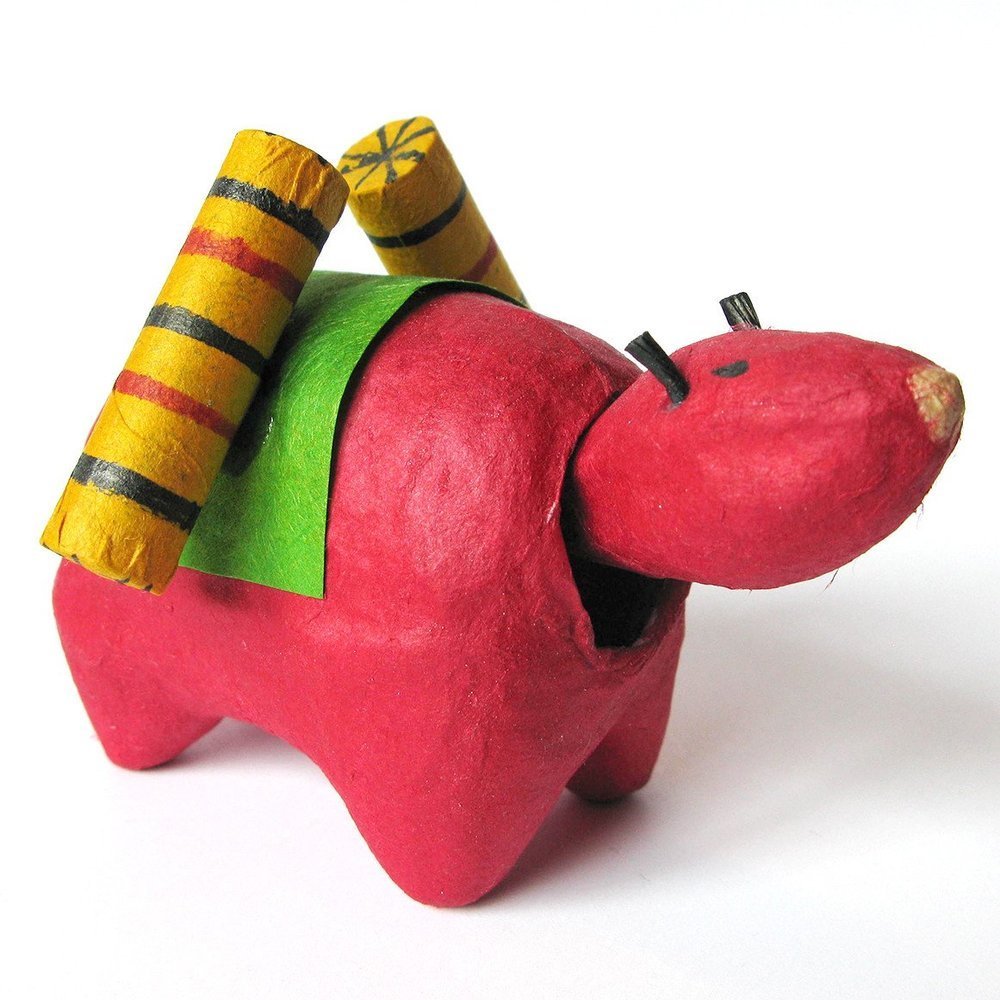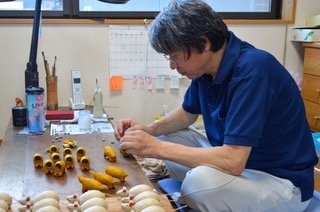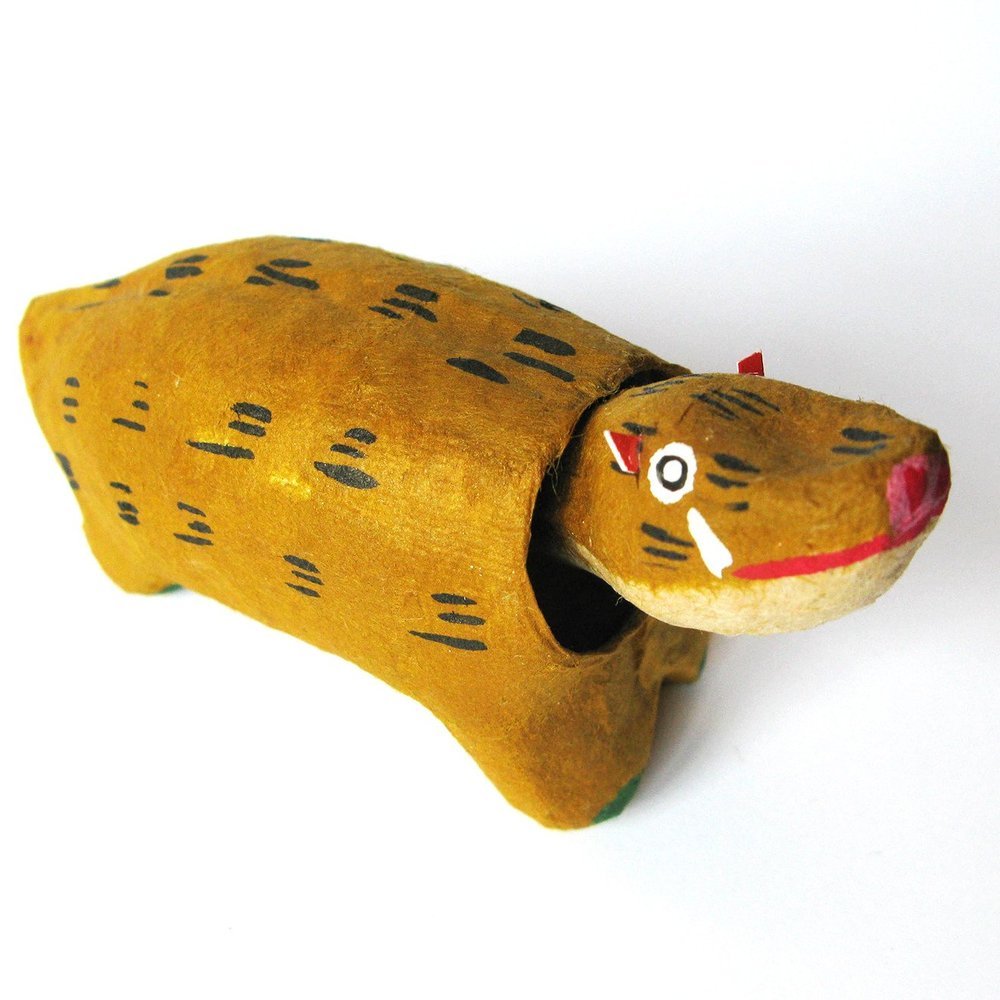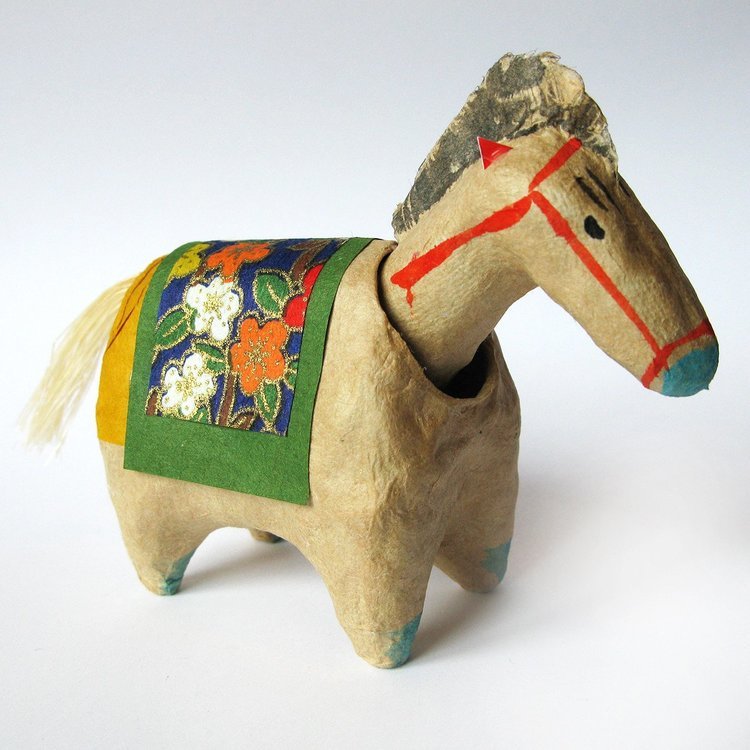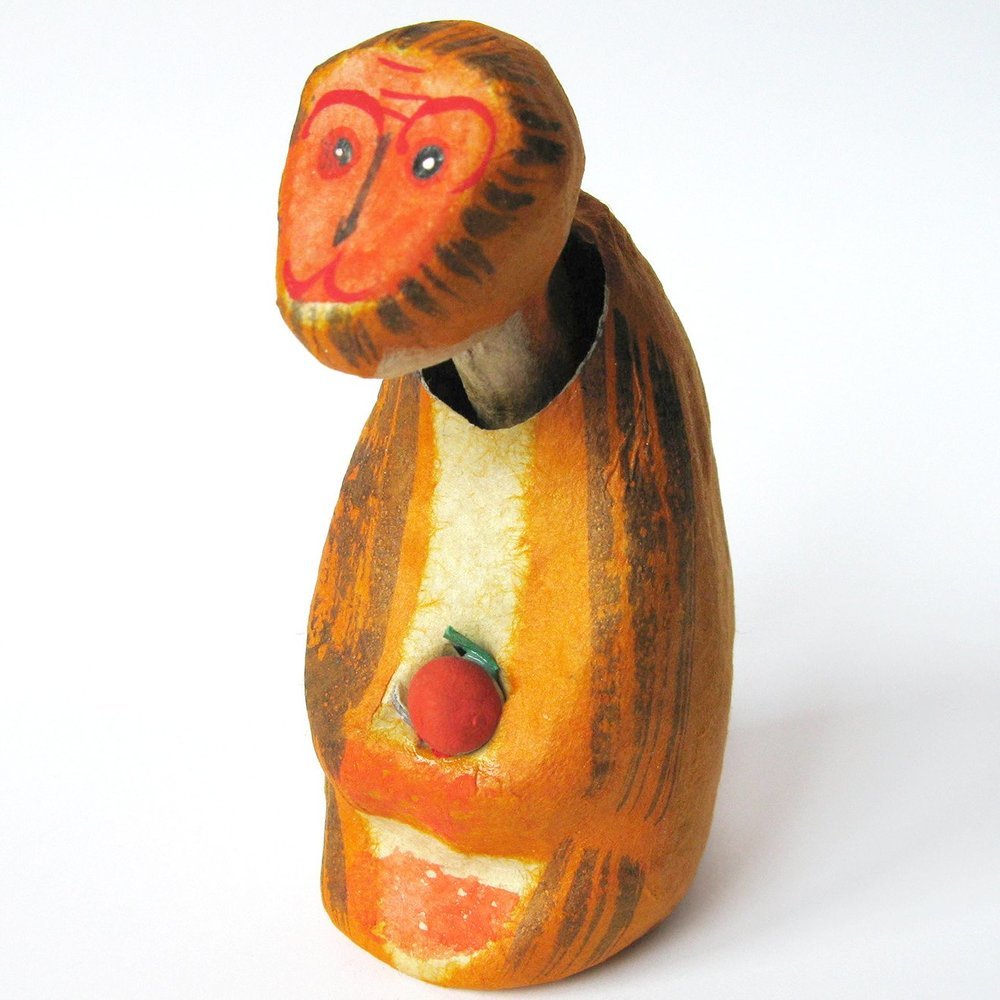Hariko : papier-mâché figurines
For centuries, the Japanese city of Sendai has been revered as a renowned producer of artisanal goods. Once a sleepy northern town known for its bright flowers and clear blue skies, Sendai is now home to over one million people, making it the third largest city in Japan. With its natural beauty, old world -meets new architecture and stunning mountain backdrop, Sendai is a peaceful place to explore.
However, visit Sendai in August and be prepared to partake in city wide jubilation during of the Tanabata star festival. Celebrated to commemorate two stars crossing paths during their yearly orbits, the Tanabata festival is a major event throughout Japan but has been an integral part of Sendai’s culture for hundreds of years.
Spending time in Sendai and one can feel a sense of how deeply rooted astrological tradition is. The twelve zodiacal guardians have been venerated in Sendai since at least the mid-Edo period with the construction of twelve shrines positioned throughout the city, each linked to a sign of the zodiac. When the Aoba Castle was built in 1601, the location and direction of each shrine were matched with the stars in order to add a celestial element to the castle’s defenses. Even though the castle itself ruins and designated as a national monument, the shrines survive and maintain their watch.
Zodiac symbols - cats, dragons and horses, among others - are tied to seasonal activities; planting crops, harvesting or fishing and serve as reminders of how important these activities were to Sendai's forebears. The inclusion of these symbols in traditional decorations during Tanabata functions as something more than just a reminder; it serves as a way for current generations to connect with those who came before them.
SENDAI TANABATA MATSURI
The Sendai Star festival or the Sendai Tanabata Matsuri takes place every year from August 6 to 8 and is a part of the Tohoku Sandai Matsuri (Three Great Festivals of the Tohoku Region) along with the Kanto Matsuri in Akita and the Nebuta Matsuri in Aomori. Whereas other major cities in Japan celebrate Tanabata in July, lining with the Gregorian Solar calendar, Sendai honors Tanabata on August 7th in line with the traditional Chinese Lunar calendar, when the two stars Altair and Vega cross paths.
The Tanabata festival was originally imported through the ancient Chinese folklore story, "The Cowherd and the Weaver Girl". Versions of which are included in the Man'yōshū; the oldest surviving collection of Japanese poetry also known as the Collection of Ten Thousand Leaves.
Legend tells the story of Orihime and Hikoboshi, two lovers destined to meet once a year on the Seventh night of the Seventh month in the center of the galaxy.
Tanabata in Sendai is a fully immersive experience. People from far and wide flock to enjoy the atmosphere as Tajimaya shopping street transforms into a mesmerizing display of lights and festivities. Polychromatic decor of streamers, lanterns, and bamboo branches line the street. Thousands of wishes called tanzaku are written down and hung from the bamboo branches. Steam emanates from stalls serving food which are squeezed between booths selling handcrafted items reflecting the zodiac legend.
It's no surprise why locals feel such pride in their city’s history and traditions and why today, Sendai remains a haven for skilled artisans looking deepen their process and bring their dreams to life.
Hariko are items people all over Japan love to have in their homes. It serves as a good luck charm, a purification amulet, or a decoration to mark a child's healthy development.
Take the Takahashi family, a multi generational Hariko workshop, specializing in Kubifuri Hariko. The practice of “hariko”, papier-mâché figurines, dates back to 17th century Edo Japan when it was first used as a decorative technique in temples and shrines like Castle Aoba. During the Meji reformation (1868 - 1912), the artform evolved from being exclusively used for religious purposes to being a popular arts and crafts activity.
Hariko also gained broader cultural significance during this period due to its association with traditional Japanese festivals like Tanabata. Kubifuri Hariko focuses on creating effegies based on the traditional 12 figures of the Japanese Zodiac.
The founder of this workshop, Hashime Takahashi created his first bobble-headed hariko, an Ox, in 1960 to celebrate the next year’s zodiac sign. Over the next twelve years he perfected the techniques needed to make each head swing properly.
Each Kubifuri Hariko starts with a mold made from paper which is then cut away upon drying. It is then ground down with a grinder, called “bari-tori”, to remove any bumps or seams left from the molding process before being painted with vivid red, green and black accents by hand. The final touches include attaching a thin weight-clay strip atop its head so that each figure can enjoyably wobble back and forth. No two figures are alike.
Today, his hariko technique is carried on by his son Toshimichi and daughter-in-law Kyoko in their family workshop in Sendai.
Despite their small size and simple stature, these harikos are crafted with incredible complexity and skill. The Takahashi family and other Japanese artisans have done remarkable work throughout history in perfecting this delicate craft and share their works around the world - including Cargo who is deeply honored be one of the few distributors carrying the Takahashi's figures outside Japan.
A visit to Sendai reveals much more than what meets the eye. A city that respects its unique artistic heritage, whose creations stand apart from those found 250 miles south in Tokyo. Imbued in its old-world charm is a distinct sense of pride for keeping its traditions alive as technology advances across Japan. No matter where you go within Sendai, you can sense heritage and a dedication to keeping these traditions alive as the next generation weaves the tapestry of Sendai’s future.
We love the Kubari Hariko. They have the rare ability to make us smile at their goofy, friendly faces and bobbing heads while we marvel at their craftsmanship. Stop by, and see if they don’t make you smile, too.
By: Joshua Lee Vineyard


